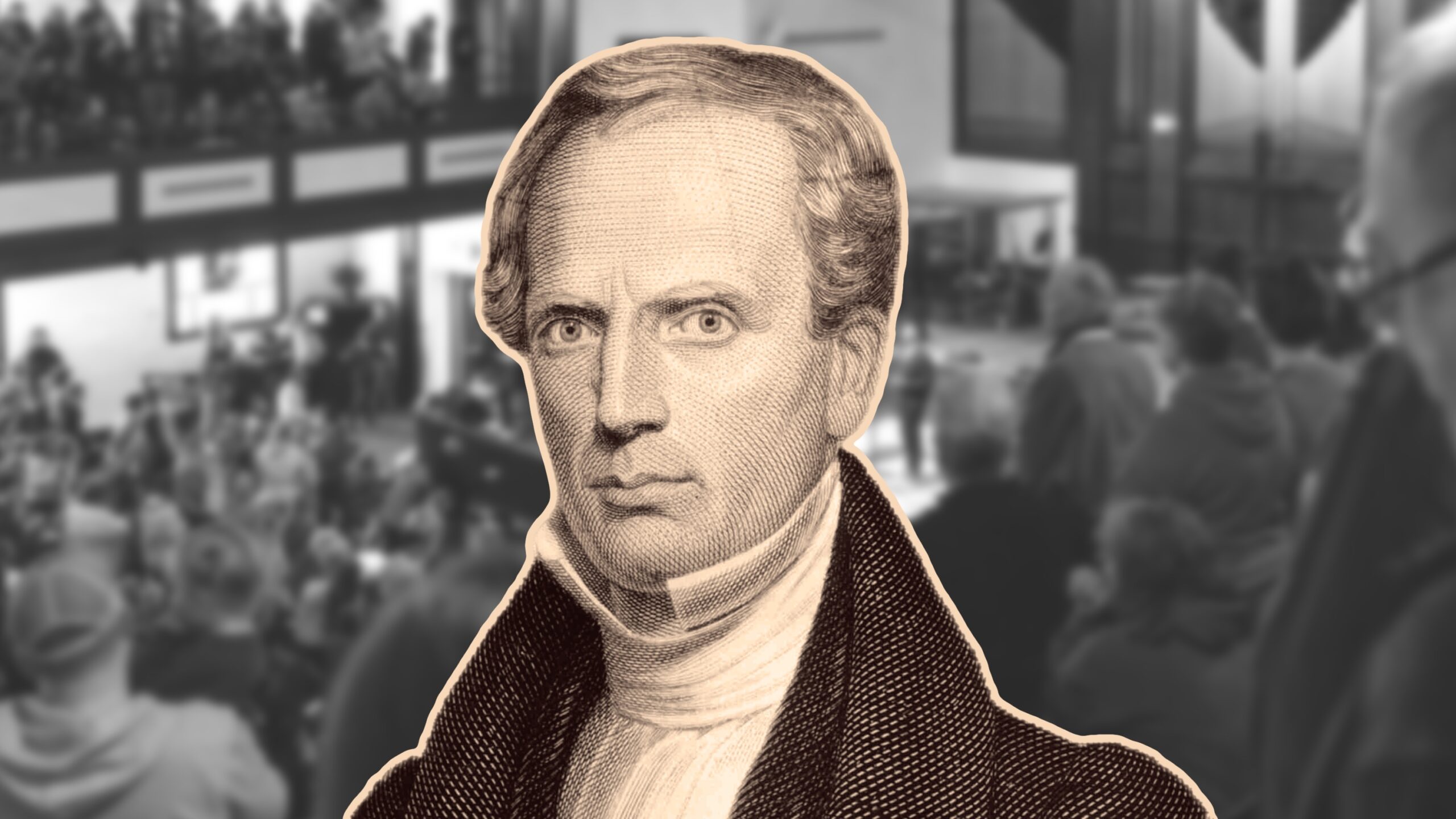We hear about modern-day revivals in small towns and big cities. Are they good or bad? Do they follow a Biblical standard?
In my area, there is (“was” if you’re reading this later) a tent revival. Facebook is abuzz with conversations, promotions, and testimonies about it. People are being saved, healed, and delivered. One of my brothers-in-Christ posted, “to those who are suspicious or have doubts about the tent revival. Jesus is being glorified and people are being loved. The methods maybe different than your norm but those two things are whats important. I recommend you go.”
There is a dividing line among Christians regarding revivals and conferences. Some say you ” feel God’s presence” at these places. Others say, “if you can’t get filled at church, what makes you think you’ll get filled there?” I decided to explore the origins of the modern-day revival movement. This article will briefly discuss Charles Finney, his tactics, who he influenced, and how the revivals have kept to his formula. Let’s begin with Charles Finney.
Charles Grandison Finney: Revivalist and Controversial Figure
Early Life and Background
Charles Grandison Finney, born on August 29, 1792, in Warren, Connecticut, was a prominent figure in the Second Great Awakening, a Protestant revival movement in the United States during the early 19th century. Originally pursuing a career in law, Finney experienced a dramatic conversion to Christianity in 1821, which led him to abandon his legal practice and become an evangelist. His career as a revivalist began in earnest in 1824, and he quickly became known for his innovative and often controversial methods of preaching and conducting revivals.
Revival Methods and Style
Finney’s approach to revivalism was markedly different from that of his predecessors. He introduced what were then seen as radical techniques aimed at eliciting strong emotional responses from his audience. One of his most notable innovations was the “anxious bench,” a precursor to the modern altar call. In this method, those feeling convicted of their sins could come forward and sit in a designated area to receive prayer and counseling. This method created a sense of urgency and personal decision-making regarding salvation.
Finney’s revivals were characterized by their intense emotionalism and theatrical elements. He believed in the power of the human will to choose salvation and emphasized the importance of the immediate decision. His style was direct, passionate, and often confrontational, aiming to provoke a strong response from his listeners. While effectively drawing large crowds and generating immediate conversions, this approach attracted significant criticism from more traditional clergy, who saw his methods as manipulative and unorthodox.
Criticism and Heretical Views
Finney was not without his critics. Many traditional Calvinists accused him of heresy because he rejected key Calvinist doctrines such as predestination and original sin. Finney believed that revival and conversion resulted from human effort and cooperation with God’s will rather than the sole work of divine intervention. This theological stance was seen as a direct challenge to the prevailing Calvinist orthodoxy of the time, which held that salvation was entirely the work of God and that human beings were inherently incapable of contributing to their salvation.
Moreover, Finney’s emphasis on moral reform and social activism as integral parts of the Christian life led some to argue that he prioritized moral transformation over true spiritual regeneration. Critics claimed that his revivals often resulted in superficial conversions that did not produce lasting spiritual fruit. This concern was particularly pronounced after Finney’s revivals, where many supposed converts appeared to fall away from their faith, leading to what became known as the “burned-over district” in western New York. In this region, intense revivalism had seemingly exhausted the religious fervor of the population.
“Cold Coals” and Lasting Impact
The term “cold coals” emerged from reports that many of those who had been stirred by Finney’s revivals eventually became more hardened and resistant to further religious influence. Investigations by circuit riders and other church officials revealed that many of these converts, initially fervent in their new-found faith, had lapsed into a state of spiritual apathy or even outright rejection of their previous beliefs. This phenomenon was attributed to the emotionally charged but often shallow nature of their conversion experiences, which lacked the depth and stability of a more thorough doctrinal grounding.
Finney’s legacy is thus complex. On the one hand, he played a pivotal role in shaping the course of American revivalism and profoundly impacted the religious landscape of his time. His emphasis on social reform, including abolitionism and temperance, left a lasting mark on American society. On the other hand, his methods and theological innovations sparked considerable controversy and debate, raising important questions about the nature of true conversion and the role of emotion in religious experience.
Influence on Contemporary Evangelists
Several notable evangelists, including Dwight L. Moody, Billy Sunday, and Billy Graham, were directly influenced by Finney’s methods. These figures have acknowledged Finney’s impact on their approaches to evangelism and revival.
Dwight L. Moody
Finney’s methods significantly influenced Dwight L. Moody (1837-1899), a prominent 19th-century evangelist. Moody adopted the anxious bench concept and emphasized personal decision in his revival meetings. He also used music to draw in crowds and create an emotional atmosphere, a technique traced back to Finney’s revivals (Findlay, James F. Dwight L. Moody: American Evangelist, 1837-1899. University of Chicago Press, 1969).
Billy Sunday
Billy Sunday (1862-1935), a former professional baseball player turned evangelist, was another figure deeply influenced by Finney. Their theatricality and emotional fervor characterized Sunday’s revival meetings, mirroring Finney’s style. He often employed dramatic gestures and vivid imagery to captivate his audience and drive home his message. Sunday’s revivals continued the tradition of the anxious bench and immediate decision, hallmarks of Finney’s approach (Dorsett, Lyle W. Billy Sunday and the Redemption of Urban America. Eerdmans, 1991).
Billy Graham
Billy Graham (1918-2018), perhaps the most famous evangelist of the 20th century, also drew on Finney’s legacy. Graham’s crusades featured large-scale altar calls and the use of music to set the tone for his messages. While Graham modernized these methods for a new audience, the core elements of Finney’s influence remained evident. Graham’s emphasis on a clear, direct call to decision during his sermons is a direct continuation of Finney’s approach (Martin, William C. A Prophet with Honor: The Billy Graham Story. William Morrow, 1991).
Modern Revival Techniques
The techniques pioneered by Finney have continued to evolve but remain foundational in modern revival practices. Contemporary evangelists and revival movements still rely heavily on emotional appeals, music, and the call for immediate decision.
- Music and Emotional Atmosphere: Modern revivals often use music extensively to create an emotional atmosphere conducive to decision-making. This can be seen in large gatherings led by evangelists like Luis Palau and events like the Harvest Crusades organized by Greg Laurie.
- Altar Calls: Inviting individuals to come forward to make a public commitment to Christ remains a central feature of many evangelical meetings, from local church services to large-scale crusades.
- Media and Technology: While Finney used the means available to him, modern evangelists utilize television, radio, and the internet to reach broader audiences, continuing the tradition of using contemporary tools to facilitate revival.
My Thoughts
While I believe that a certain number of people do get saved and have lasting fruit, I am rather skeptical of the techniques used at modern revivals and their outcomes. The test is time. While speaking in tongues and experiencing excitement, the overall result should be a life that looks more and more like Jesus Christ. The fruits of the Holy Spirit (Galatians 5:22-23) should manifest in the lives of the saved. I have personally witnessed the “cold coals” and people backsliding into more depraved states after experiencing the exultations of a revival and/or conferences. One of the qualities I can predict is compulsiveness, which is the opposite of patience and contentment.
There is the question of “who” the revivals are for. Are they for the people who haven’t put their faith and trust in Jesus Christ? Are these revivals for the brothers and sisters in Christ? If you have a “mixed bag” of people attending the Finny”esk” revivals, the Gospel—the true Gospel—must be heavily preached, not so much the signs and wonders. Emotion should not be the basis by which a person reconciles himself/herself to God through Jesus Christ or turns a prodigal back to God. Emotional fervor is a poor foundation for sound theological doctrine and a clear understanding of the Gospel.
References:
- Dorsett, Lyle W. Billy Sunday and the Redemption of Urban America. Eerdmans, 1991.
- Findlay, James F. Dwight L. Moody: American Evangelist, 1837-1899. University of Chicago Press, 1969.
- Hardman, Keith J. Charles Grandison Finney: Revivalist and Reformer. Syracuse University Press, 1987.
- Martin, William C. A Prophet with Honor: The Billy Graham Story. William Morrow, 1991.
- McLoughlin, William G. Modern Revivalism: Charles Grandison Finney to Billy Graham. Ronald Press, 1959.
- Murray, Iain H. Revival and Revivalism: The Making and Marring of American Evangelicalism 1750-1858. Banner of Truth Trust, 1994.





